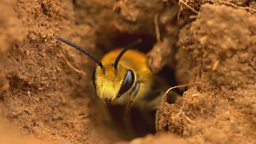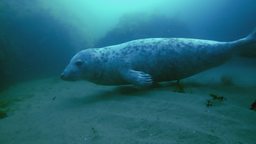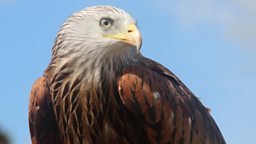3 Things to See in Episode 4
Ivy bee (Colletes hederae)

Ivy bees were first spotted in Wales in 2001 and they have quickly become an established species. They feed exclusively on the flowers of the ivy plant and are one of the last species to wake from their burrows. They typically emerge in mid to late September and they can even be seen flying around in November! Ivy bees are solitary, unlike their honeybee cousins – however they tend to group together and make individual burrows in the same areas. This can lead to problems for the females as the males tend to wait outside the burrows for the females to return in order to attempt to mate with them.
Grey seal (Halichoerus grypus)

Only around a 100 grey seals live on Ramsey island in Pembrokeshire all year round but in the breeding season, this number can swell to around a 1,000. This makes Ramsey island one of the largest breeding colonies of grey seals in the British Isles. Seals typically group together with eight females controlled by a single male "bull" seal and, during the breeding season, the bull spends the majority of his time fighting off competitors, leaving little time to feed. The RSPB manages Ramsey island and estimates that up to 750 pups can be born there each year. Grey seals are considered “true” seals due to the absence of protruding ears. They are a playful species and an iconic part of the west Wales coastline.
Red kite (Milvus milvus)

In 1992 there were just six breeding pairs of reds kites in the area around Rhayader but thanks to the efforts of one farmer, there are now as many as 500. The numbers are a testament to the success of a feeding programme at Gigrin Farm, where owner Chris Powell began feeding the few lone kites on his land with rabbits. He noticed that the more food he put out, the more kites the meat attracted. When the RSPB saw what Chris was doing, they asked him if they could make Gigrin Farm an official Red Kite Feeding Station. Since then, numbers have soared and the farm has become a tourist destination for visitors to flock and see the birds at feeding time. Red kites are the official bird of Wales and while once threatened with extinction they can now be seen all over the country, all year round.
